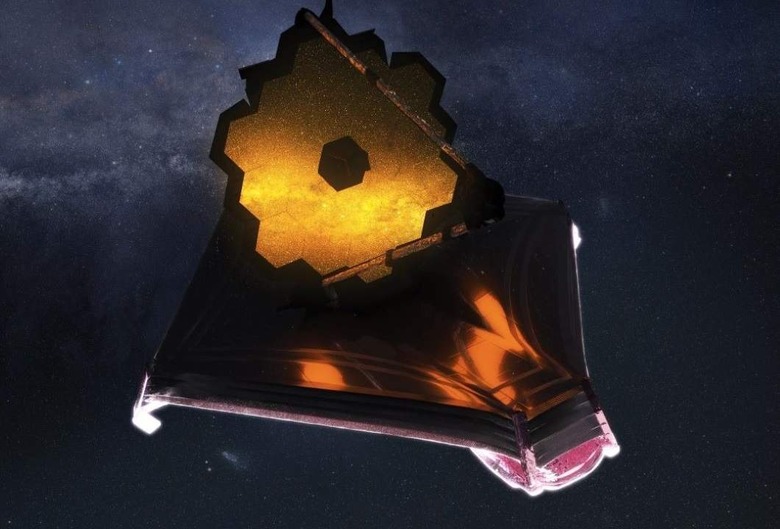The James Webb Space Telescope Has Arrived At Its New Home
The James Webb Space Telescope has completed its million-mile journey through space and has safely reached its new home orbiting the sun. The next generation observatory, launched on Christmas day last year, successfully performed an orbital insertion maneuver today to enter orbit at the second sun-Earth Lagrange point, or L2.
To enter its final orbit, James Webb fired its thrusters for five minutes beginning at 2 p.m. EST today, Monday January 24, 2022. This was the final course correction along Webb's journey and added just a little bit of speed to the spacecraft. The burn added 3.6 miles per hour to its speed, around walking speed, but this was enough to push it into its orbit.
The advantage of being in orbit at a Lagrange point is that it is a point of equilibrium between the sun and the Earth which means the spacecraft requires very little adjustment to stay in a stable orbit. The other advantage of this orbit is that it allows the telescope to both receive a constant exposure of sunlight, which is important to allow it to collect power via its solar panels, while only ever having one side face the sun.
This means that the sun-facing side can be protected by the telescope's enormous sunshield, while the space-facing side remains cool. Finally, this particular orbit also makes it easy for the telescope to communicate with Earth via NASA's Deep Space Network while still allowing it to view the entire sky as it orbits the sun (via NASA's James Webb Space Telescope blog).
"Webb, welcome home!" said NASA Administrator Bill Nelson (via NASA). "Congratulations to the team for all of their hard work ensuring Webb's safe arrival at L2 today. We're one step closer to uncovering the mysteries of the universe. And I can't wait to see Webb's first new views of the universe this summer!"
What's next for James Webb
Adriana Manrique Gutierrez, NASA Animator
As Webb is in safely in L2, it can move onto its next stage. The team is working on the long process of adjusting both its primary and secondary mirrors, which need to be tweaked with nanometer precision until they are in perfect position for maximum accuracy when the telescope is looking out into the depths of space.
Now that the spacecraft is in its orbit, it goes through a period of controlled cooldown in which its temperatures drop to a stable level. To control this process and avoid damaging any of the delicate parts of the telescope, there are specially place electric heater strips which will be used to manage temperatures (via the Goddard Space Flight Center). Finally, the scientific instruments will be calibrated and then Webb can begin its scientific research, looking at everything from black holes to distant galaxies.
"During the past month, JWST has achieved amazing success and is a tribute to all the folks who spent many years and even decades to ensure mission success," said Bill Ochs, Webb project manager at NASA's Goddard Space Flight Center (via NASA's James Webb Space Telescope blog, as linked above). "We are now on the verge of aligning the mirrors, instrument activation and commissioning, and the start of wondrous and astonishing discoveries."

